There was a time when most people had to visit a local cafe if they wanted to enjoy a genuine espresso. These days, consumers have the option of buying equipment that allows them to make their favorite beverage in their very own kitchens. Espresso machines are available in a wide range of sizes with various features and the prices vary accordingly. Check out our reviews of the top 10 espresso machine on the market.
This modern appliance brews coffee by using high pressure to apply hot water to beans. The result is a thick, hot beverage with creamy foam floating on the surface. Many coffee lovers prefer this brewing method because it concentrates the flavors and produces a more full-bodied taste than traditional drip brew methods.
How Much Control Do You Want Over Your Coffee?
Consumers can choose from manual or automatic appliances. The biggest difference is in how much effort is necessary to operate the equipment. Some people are more interested in optimizing their time by having the machine do most of the work. Others are more interested in perfecting the art of making the ideal cup of espresso and would rather have more control over the process. Budget may also be a factor in this decision as automatic units are generally more expensive than the manual options.
Individuals who choose to purchase a manual machine must be willing to put in the time and effort required to learn how to use it properly. This type of machine is available with a spring piston lever or a direct lever. With a direct lever model, the operator applies pressure manually to deliver the water to the grounds.
The spring piston lever relies on an internal spring to infuse the grounds with nearly boiling water. The operator compresses the spring by pulling down on the lever and the spring exerts steadily declining pressure to the liquid as it returns to its resting position. When the machine is not in use, the lever will point upward, unlike a direct lever unit, which has the lever pointing down. The operator controls how much pressure to apply by applying force to the lever.
With a lever machine, the operator has complete control over preinfusion, which is the length of time the water rests on the coffee grounds. Most semi-automatic and automatic models do not allow the operator to control this step. To pull the perfect shot, the operator must factor in a number of variables. These include the specific coffee grind and its level of freshness as well as the amount of grounds used and the water temperature.
A manual machine is similar to a semi-automatic appliance in that it provides the operator the opportunity to decide how much water to apply to the grounds. An automatic machine allows the user to program in a specific amount but to vary the amount requires additional programming. Manual machines offer additional control when it comes to adding more water to the brew.
The lever machine has a grouphead with a cavity. When the lever is pushed to cock the spring, water fills the cavity after a valve opens between the grouphead and boiler. To add more water, the user can depress the lever again. This opens the valve and allows the cavity to fill up with water. Reactivating the spring is done when the initial amount of brewing water is nearly gone, half gone or one-quarter gone allowing the user to control the amount of additional water used.
A lever machine maintains water in the boiler under pressure and several degrees above the boiling point. The high pressure allows the water to remain in liquid form at a hotter temperature than it would at normal atmospheric pressure. This high temperature is necessary to transport the water from the boiler to the grouphead and to produce the steam required to froth milk.
Under normal circumstances, water at such a high temperature would scorch the grounds making for a bitter beverage. The appliance’s design overcomes this temperature problem. The grouphead serves as a heatsink to cool off the water to the point that it is at optimum brewing temperature by the time it reaches nozzle.
This design produces the desired results but it has its disadvantages as well. The grouphead’s ability to leech off heat diminishes when pulling consecutive shots. Eventually the water will be too hot and will burn the grounds unless the appliance is allowed to rest. This is also a problem when the machine is left on for several hours.
Manual machines do allow users various ways to manipulate the temperatures. Some individuals will turn the machine off or unplug it after it is at operating temperatures. Another technique involves warming up the grouphead with a hot water flush and letting the machine rest for a couple minutes between pulling shots. Many people quickly discover that employing trial and error methods of experimentation is the only to get the hang of using a manual espresso machine.
When choosing an automatic appliance, consumers have several options to consider. A semi-automatic machine has automatic temperature controls and an automatic pump. What makes it semi-automatic is the activation switch to turn the pump on and off giving the user control over the length of time the pump is engaged.
The temperature controls and pump are also automated for the boiler in an automatic appliance. On many models, the preset water volumes are programmable giving the user control over how much water the system delivers to the grounds. A super automatic machine has the same features as the automatic model but it also prepares the grounds by grinding, measuring, and tamping them at the touch of a button.
Dual Boiler Espresso Machines
A dual boiler machine is the most sophisticated of the automatic models, which also means it is the most expensive. These units allow for steaming and brewing at the same time. The water in one boiler is kept at a temperature that is ideal for brewing while the water in the second boiler stays at steaming temperature.
The biggest problem with this type of brewer is that European manufacturers have not designed them for power specifications in the United States. The average 15-amp electrical wall socket delivers 110 volts. This is insufficient power to operate both boilers at European specifications.
A heat exchanger design with a single boiler allows for simultaneous brewing and steaming. The water in the boiler is kept at a temperature that produces steam. Water flows from the reservoir to the grouphead through a coiled tube, which serves as the unit’s heat exchanger. The brewing water is flash heated to the optimum temperature for brewing as it travels through the tube. Consumers opting for this design should select a model that has a way to connect a water supply or features an external reservoir if they intend to leave the machine on around the clock. This allows for better temperature stability and more consistent brewing results.
A dual use machine with a single boiler is the most affordable and common type of appliance used by consumers. The design features two thermostats. The first thermostat controls the brewing temperature to draw the most flavor out of the grounds. The second thermostat operates several degrees hotter at a temperature to produce steamed milk. Users must choose between the two settings making it impossible to steam milk and brew coffee at the same time.
Semi Automatic Espresso Machines
A semi-automatic model is ideal for consumers who want some control over the brewing process but not total control. The user can control exactly how much water is delivered to build the shot. This is done by pushing the pump switch at the appropriate time. With an automatic device, the machine delivers the same amount of water with each shot with no way to adjust if necessary while pulling the shot.
Semi-automatic appliances automatically control the boiler heater. Whenever the heating element detects a temperature drop, it turns on to allow the water to return to the optimum temperature for brewing. Older machines required the user to turn the boiler heater on and off manually. Most users will have no trouble producing consistent tasting beverages because the machine automatically controls the pump pressure. With a lever machine, the spring or the user controls the pressure, which can lead to inconsistent results.
An automatic unit controls every aspect of water delivery. The user simply fills the filter with coffee, pushes the button to start the brewing process, and the machine does the rest. It releases the same predetermined amount of water every time until the user reprograms it. The machine ends the brewing cycle when it has produced the desired amount of beverage. Most machines have four settings allowing for one or two shots short and one or two shots long. Some models have a semi-automatic button that allows users to override the pre-programmed options.
Super Automatic Espresso Machines
The super-automatic machine does everything the automatic machine does but it also grinds the beans, removing yet another step in the brewing process. Most of these products feature high-quality conical burr grinders. Users have the option of choosing the grind level from extremely fine or coarse. Selecting the right setting is crucial because finely ground beans produce more flavor but the result can be bitter if the beans are too finely ground. Some models have a pre-grinding function that will grind beans for a second cup of coffee while the first is still brewing.
These high-end appliances offer automatic dosing to give the user the most consistent results possible. The dosing mechanism allows the user the ability to choose precisely how many grams of beans to load into the filter for each shot. Consumers who want an even easier way to adjust the dose from time to time can select a machine that has a bypass doser. The bypass device does not utilize the grinder, so it must be loaded with pre-ground beans.
Most super automatic brewers have a single Thermobloc heating unit. Small amounts of water are allowed to flow through the reservoir. Most units will take approximately 45 seconds to heat the water from the brewing temperature to the proper temperature for steaming. To eliminate the wait time for the water to heat to steaming temperature, consumers can purchase a model featuring dual heating systems. This eliminates the need to cool the boiler for the next brewing cycle after steaming.
Additional features are available on a variety of machines from semi-automatic to super-automatic designs. Some individuals prefer models with settings for pre-brewing. This function moistens the grounds initially and then allows time for them to steep before starting the brewing process. This method of brewing can improve the quality and quantity of crema while extracting the maximum amount of flavor from the beans.
Cup warmers are handy for enhancing the espresso drinking experience. Because the liquid is brewed in small quantities, it cools off very quickly as soon as it fills the cup. Machines with this feature typically have a heated storage tray on top of the unit. Some systems have a dedicated heater that warms the tray. Others utilize a passive heating system and leech heat from the machine’s boiler system.
Water Filtration
Brewing water quality plays a major role in the taste of the finished product. Some makers have built-in water filtration systems. The filters in these systems will remove chlorine and a variety of minerals, including lead, copper, and aluminum before the water enters the brewing process. The filter also removes carbon from the water and prevents calcium build up inside the machine. This eliminates the need for decalcifying during routine maintenance.
The amount of money spent on a quality espresso machine depends on budget and personal preference. Some consumers will spend as much on a machine as they will on other large kitchen appliances but if they can get several years of reliable performance in exchange, they consider the purchase a wise investment. Those who want to save money but do not mind putting in the effort required to use a manual machine enjoy the most authentic preparation experience. Those who prefer instant gratification and consistent results with no fuss will not mind spending more for a machine that does it all.

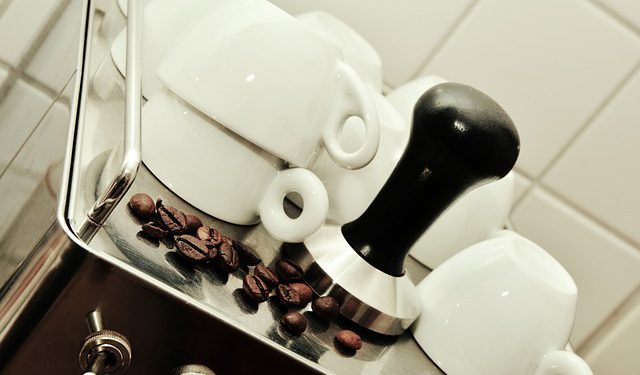
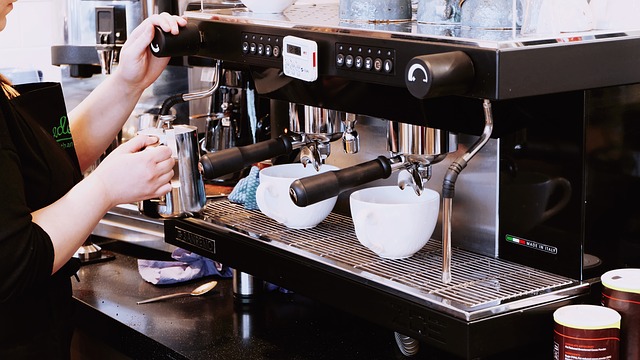
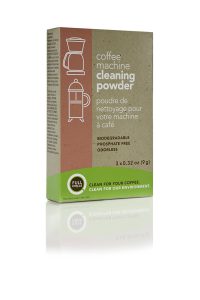 Step 4: Resting the milk
Step 4: Resting the milk Boosts Immune System
Boosts Immune System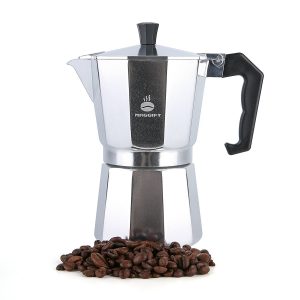 Are All Machines Made To Make Italian Espresso?
Are All Machines Made To Make Italian Espresso?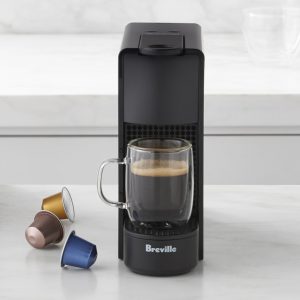 In recent times, we have witnesses reduction in the size of many electronics and the coffee maker has not been left out, one limitation of size reduction is the complexity of the geometry and use of the final product. I am going to explain how to effectively use the machine.
In recent times, we have witnesses reduction in the size of many electronics and the coffee maker has not been left out, one limitation of size reduction is the complexity of the geometry and use of the final product. I am going to explain how to effectively use the machine.